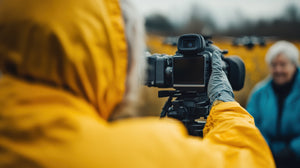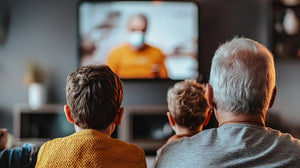Blog
How to Market Your Independent Film (Strategies That Work)
Marketing your independent film requires ingenuity and persistence, but with the right strategies, you can create a buzz that drives viewership and engagement. By leveraging social media, film festivals, crowdfunding, and other creative tactics, you’ll not only promote your current project but also lay the groundwork for future success.

Jan 16, 2025
25 Must Have Filmmaking Tools
Equipping yourself with these essential filmmaking tools will empower you to create compelling stories that resonate with audiences. Whether you're just starting out or looking to upgrade your gear, investing in the right tools can elevate your filmmaking experience to new heights.
Exploring Film Genres: From Noir to Sci-Fi
The evolution of film genres is a testament to cinema’s ability to adapt, innovate, and reflect the world around it. From the hard-edged cynicism of film noir to the mind-bending wonders of sci-fi, each genre has shaped modern storytelling in unique and profound ways.

Dec 16, 2024
How Netflix and Disney+ Changed the Game
Streaming began as a convenient alternative to physical media, offering viewers instant access to films and TV shows. Netflix led the charge in the late 2000s, transitioning from a DVD rental service to a full-fledged streaming platform. What began as a supplementary service has become the centrepiece of entertainment for millions worldwide.
10 Creative Writing Prompts for your Next Film Script
Writer’s block is an inevitable challenge for any filmmaker. Whether you're crafting a short film, an indie feature, or even a commercial project, finding that perfect idea can feel daunting. But don’t let a creative lull hold you back! Writing prompts can be a fantastic tool to spark inspiration and get the creative juices flowing. Below are some unique, thought-provoking prompts tailored for filmmakers ready to dive into their next project.
Film Industry Job Openings December 2024
Are you looking for your next big break in the film industry? Filmmaking Planner has listed some UK and US based filmmaking opportunities you won't want to miss!
Check out these filmmaking jobs near you and don't forget to share with your network – you never know who might be looking for their dream job!
Creating Holiday-Themed Short Films on a Budget
Creating a holiday-themed short film on a budget is all about ingenuity and resourcefulness. By focusing on heartfelt storytelling, leveraging existing resources, and collaborating with passionate individuals, you can produce a festive film that captures the magic of the season without overspending. So, grab your camera, some holiday cheer, and a dash of creativity
Tips on How to Get The Most Out of Networking, Meet-ups and Events
Networking is a two-way street, and showing genuine interest in others’ work is crucial to making meaningful connections. Instead of approaching every interaction as a pitch, focus on asking questions and learning from others. By listening actively, you’ll often find common ground that leads to collaboration or, at the very least, a memorable conversation.
Mastering Natural Light: Seasonal Lighting Hacks for Filmmakers
Natural lighting doesn’t just illuminate a scene—it adds a sense of time, place, and emotion that can enhance your storytelling. By understanding the qualities of seasonal light and using it to your advantage, you can create visuals that are dynamic, evocative, and true to the story you’re telling. Embrace each season’s unique light to add depth, warmth, or intensity to your film and make your work visually unforgettable.

Nov 14, 2024
Anti-Bullying Week Insights and the Impact of the Short Film 'Dismissed'
Bullying can take many forms—physical, verbal, emotional, and even digital. It can happen anywhere: at school, in the workplace, or online. Regardless of the medium, the effects can be devastating, leading to anxiety, depression, and a sense of isolation for those targeted. Recognising the different types of bullying is crucial in addressing the issue effectively.
Top 10 Indie Films You Haven’t Seen (But Should)
Independent films have a unique charm that often eludes mainstream cinema. They can tackle unconventional narratives,...
FREE Websites for Halloween Sound Effects
For filmmakers, film students, and video creators looking to bring an eerie Halloween atmosphere to their work, havin...











